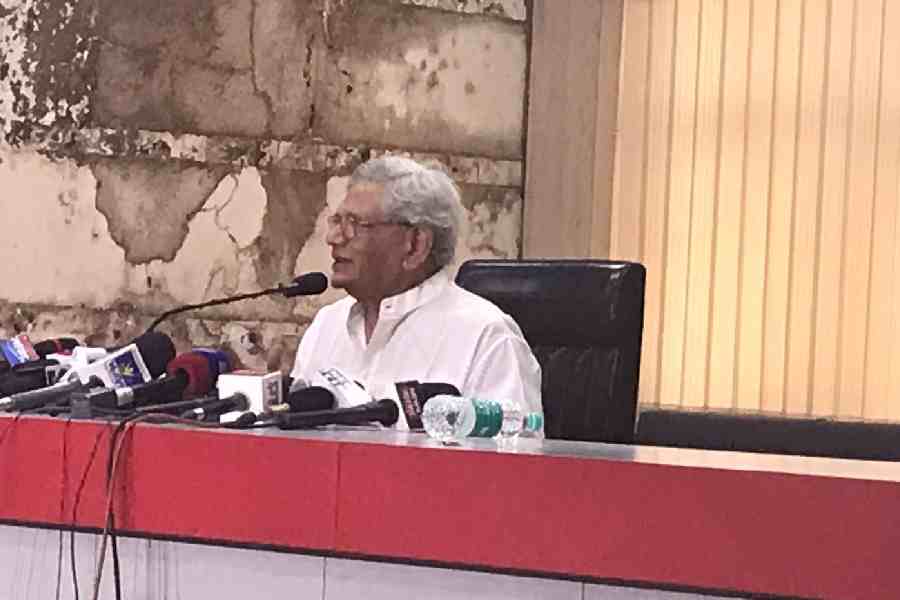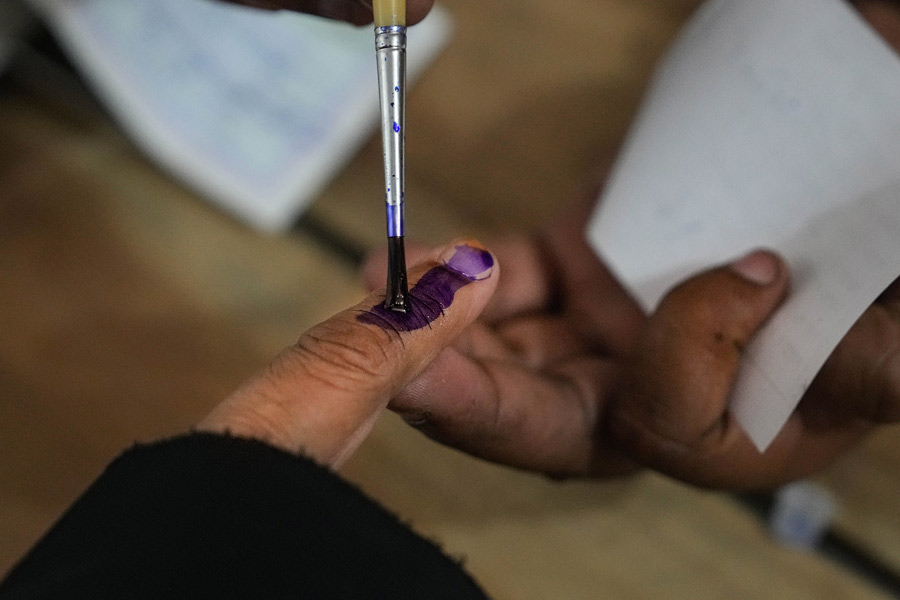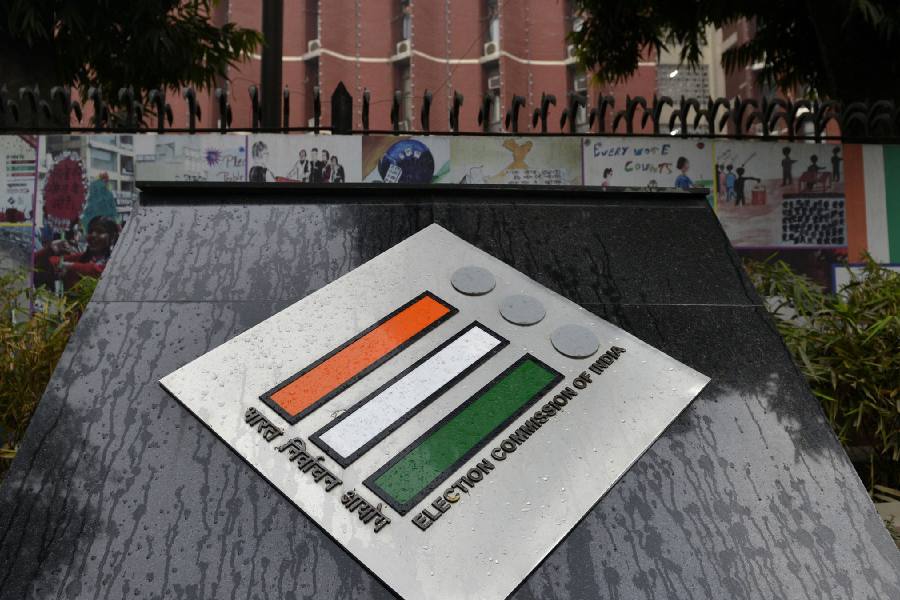Sitaram Yechury said on Thursday that the Election Commission’s refusal to reveal actual voting figures has put a question mark on the entire poll process, the CPM general secretary adding to the barrage of criticism that the poll panel has been facing over the manner in which it has revealed phase-wise voting percentages.
“The EC not releasing the final figures opens the road to manipulation and puts a question mark on the entire poll process,” Yechury told the media here in the afternoon.
During the day, the Election Commission issued a statement saying that the first four phases of elections has recorded an overall voter turnout of 66.95 per cent with 45.1 crore votes cast across 379 constituencies. In the remaining three phases, 163 constituencies will go to polls on May 17, 20 and June 1.
The CPM, like the rest of the Opposition, is mulling its next step. “The Election Commission is a statutory constitutional body. While elections are on, the courts too do not want to intervene. We are exploring legal options. The other method is to mount public pressure and it is going on,” Yechury said.
Last Saturday, presidents of the Press Club of India, the Indian Women’s Press Corps, the Press Association and the Foreign Correspondents’ Club wrote to the chief election commissioner, expressing their dismay at the EC not holding a press conference after the completion of voting in the first three phases.
“Till 2019, the last general election, holding a press conference after voting in each phase was the normal practice. India, being one of the largest democracies in the world and the general election considered as the ‘biggest festival of democracy”, the citizens have every right to know what has happened on the voting day, from the constitutional body, the Election Commission of India,” a letter signed by all of them said.
Former chief election commissioner Y.S. Quraishi, who headed the central poll panel between 2010 and 2012, said, “I do not understand why the EC is not releasing the full data. I don’t remember any such complaint ever.”
Yechury apart, all the major Opposition leaders, including Congress president Mallikarjun Kharge, Opposition chief ministers Mamata Banerjee and Arvind Kejriwal, have had apprehensions and questioned the delay in the release of the actual voting figures.
“The sudden jump in final voter turnout by nearly 5.75 per cent from what the Election Commission had released earlier is worrying. There are apprehensions of manipulation of results by the BJP as several EVMs were missing for a long period,” Mamata had said while campaigning in Farakka ahead of the third phase of polling.
The Trinamul’s Krishnanagar nominee, Mahua Moitra, had on May 14 – the day her constituency went to polls in what was the fourth phase -- shared data that included total number of voters in each of the Assembly segments and the actual votes cast.
“Attention ECISVEEP (the X handle of the Election Commission) – here is data for my constituency with number of voters compiled within 24 hours of polling. Why are you not able to give this for 4 phases,” Moitra asked on her X-handle.
The actual voting figures assume significance on the day of counting as they help to compare the actual votes polled with the votes counted. Any mismatch during counting cannot be proved otherwise.
According to the rulebook, each presiding officer of a polling station must compile total votes polled at the end of polling and record it in what is called a Form 17. Copies of the form are handed over to representatives of political parties as well as the returning officer either on the same day or the next. It is the returning officer’s responsibility to compile the data from all polling stations and send the final turnout in absolute numbers to the EC.
In the ongoing elections, the Opposition has reasons to be apprehensive. The first phase of polling was held on April 19, while the second phase was held on April 26. The EC released final voter turnout percentage on April 30, 11 days after the first phase of polling.
The voter turnout percentage for the first two phases, as released by EC, was 66.14 per cent in the first phase and 66.71 per cent in the next. These were substantially higher (6.14% in phase 1 and over 5% in phase 2) than the initial voter turnout that it had provided soon after polling had ended in the first two phases.
When Congress president Kharge, writing to coalition partners in the INDIA bloc, raised doubts over EC data, the central poll panel sent a strongly worded reply.
“Commission fully respects the right to free speech and considers it to be the privilege of political parties and their leaders to correspond and communicate with each other. However, the Commission has a responsibility to act against developments which have a direct impact on delivery of its core mandate of conduct of elections in its entirety till the delivery of results,” it said.
Claiming the delay was not “unusual”, the EC had said, the time taken was “required to collect data from a large number of polling stations” and it was available on an app run by the EC.
“The very premise that voter turnout data was released late is devoid of facts as it has always been available on the Voter Turnout app. Needless to add that polling station wise data of electors and voters is given to agent of the candidate on the day of poll itself at close of poll.”
The Association for Democratic Rights which had filed a petition with the Supreme Court raising concerns over electronic voting machines in 2019, has filed a fresh application before the apex court.
“The voter turn-out data for the first two phases of the ongoing 2024 Lok Sabha elections published by ECI on April 30 has been published after 11 days of the first phase of polling held on April 19 and four days after the second phase of polling held on April 26,” it said. “The data as published by EC in its press release on dated April 30 shows a sharp increase (by about five to six per cent) as compared to the initial percentages announced by EC as of 7pm on the day of polling. Inordinate delay in release of final voter data, coupled with the unusually higher revision in the EC’s press note of April 30 and the absence of disaggregated constituency and polling figures in absolute numbers has raised concerns and public suspicion regarding the correctness of the said data.”
The matter is likely to be heard next week.












